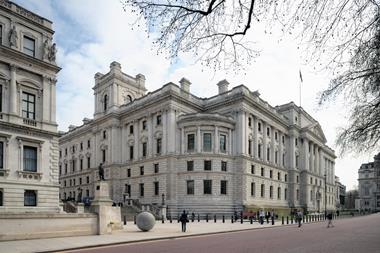’The measures will reduce bureaucracy, facilitate competition and support UK economic growth and competitiveness,’ says chief executive
The Prudential Regulation Authority (PRA) has produced a “sensible” consultation on a major set of reforms to the Solvency II framework in the UK, according to KPMG UK insurance partner Huw Evans.

The PRA published CP12/13 Review of Solvency II: Adapting to the UK insurance market last week (29 June 2023), with the aim of creating a new UK regulatory regime for insurance firms, known as Solvency UK.
The reforms aim to eliminate onerous requirements, improve flexibility, encourage entry, build competition and build competitiveness.
Evans said the proposals “appear to be sensible” and welcomed the reforms.
He said they maintained a ”robust risk-based capital framework consistent with our European neighbours and international best practice”.
Implementation
The government’s Solvency II plans, which are yet to be finalised, aims to loosen financial restrictions on insurers by allowing them to hold less capital in reserve and represent a relaxing of regulations.
Read: Opportunity for Solvency II reform is ‘significant’ – Amanda Blanc
Read: UK government sets out final reform plan for Solvency II
Explore more regulation-related content here or discover other news stories here
The PRA’s proposals include further streamlining of reporting requirements for all firms, while simplifying and improving the flexibility in the assessment of internal models.
They will also foster new entrants into the UK insurance market by easing entry of new firms and simplifying the regulation of international insurers operating through branches.
It forms part of a wider package which will be implemented through a combination of government legislation and PRA rule changes.
In line with the government’s legislative plans, some reforms are expected to be implemented by the end of this year and the remainder in 2024.
Evans welcomed the PRA’s clarity on implementation timelines, saying it would see reforms introduced ahead of the parallel process in the EU.
However, he added that “there will be a significant amount of implementation work ahead, which should not be under-estimated by firms or regulators”.
Risk margin
This consultation is relevant to UK Solvency II firms, the Society of Lloyd’s and its members and managing agents, insurance and reinsurance firms that operate in the UK and firms within the PRAs temporary permissions regime for reinsurers and UK holding companies.
It came after the UK chancellor of the exchequer Jeremy Hunt confirmed that the risk margin for general insurance businesses will be lowered by 30% as the government set out a reform plan in November 2022.
The PRA’s reforms are designed to:
Eliminate onerous requirements: This includes streamlining reporting requirements to reduce administrative burdens on insurers, building on previous reporting reforms already implemented by the PRA and simplifying the calculation process for the transitional measure on technical provisions (TMTP) to reduce costs and complexity.
Improve flexibility: By moving towards a more principles-based approach to assessing firms’ internal models, thereby reducing significantly the number of detailed requirements that firms must meet. The proposals will also allow more flexibility in the calculation of group capital requirements and will apply proportionality by increasing the size thresholds at which small insurers are required to enter the Solvency UK regime.
Encourage entry and build competition: By introducing a ‘mobilisation’ regime which will allow newly authorised insurers more flexibility as they set up in the UK, as well as by raising the thresholds above which Solvency UK will apply.
Build competitiveness: By removing certain requirements for branches of international insurers operating in the UK.
Matt Francis, insurance director at KPMG UK, noted that the PRA’s proposed regulations were in line with the level of reductions in the government’s consultation last year.
Francis added: “Non-life insurers will also see a reduction by a third in their risk margin from the planned lowering of the cost of capital from 6% to 4%.
“We also expect to see further details on how the changes to the matching adjustment will operate in practice when the PRA publishes amendments to its rulebook.”
Russ Taplin, consultant at Altus Consulting, added that the industry should welcome the reduction in risk margins and “any loosening of asset and liability restrictions for cashflow matching”.
He also felt that from a consumer perspective, the PRA’s proposals should also mean improving rates for annuities going forward.
Taplin continued: “That would be very welcome to consolidate the improvements we’ve seen recently due to increasing interest rates,” he said.
“Implementing the solvency reforms within existing internal model or other methodologies will remain the challenge – and the devil will be in the detail for individual providers.
”Of course it will also very much down to the investment mandates and risk profiles that each is willing to implement to bring about the most benefit.”
‘Support growth’
The PRA is currently looking for feedback on the proposals set out in the consultation.
This consultation will close on 1 September 2023 for proposals in chapter two and ten, while the deadline for chapter 11 is 31 July 2023.
Sam Woods, chief executive of the PRA, said: “These measures will reduce bureaucracy, facilitate competition and support UK economic growth and competitiveness without lowering prudential standards or weakening policyholder protection.”
Hosted by comedian and actor Tom Allen, 34 Gold, 23 Silver and 22 Bronze awards were handed out across an amazing 34 categories recognising brilliance and innovation right across the breadth of UK general insurance.



















































No comments yet